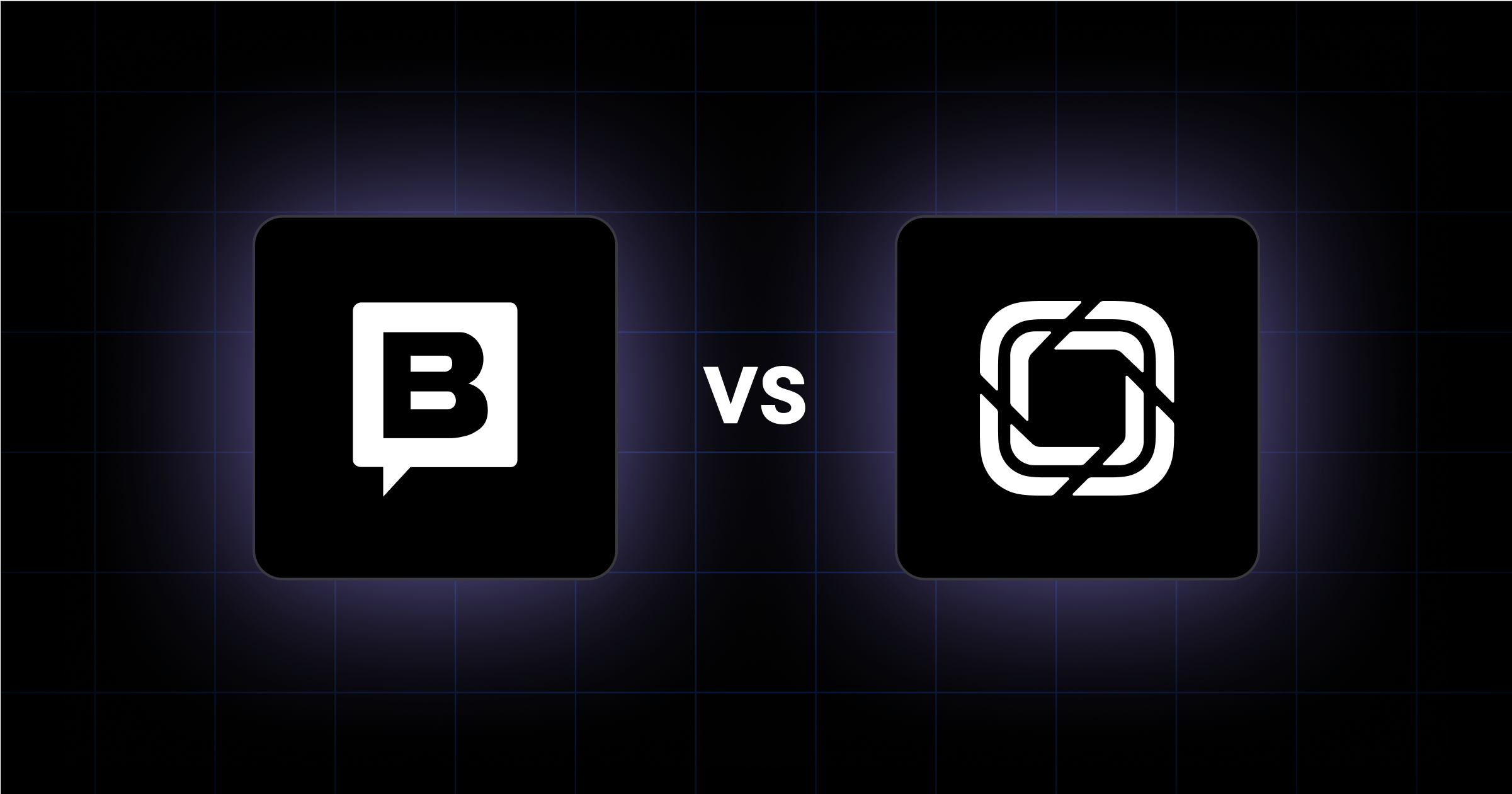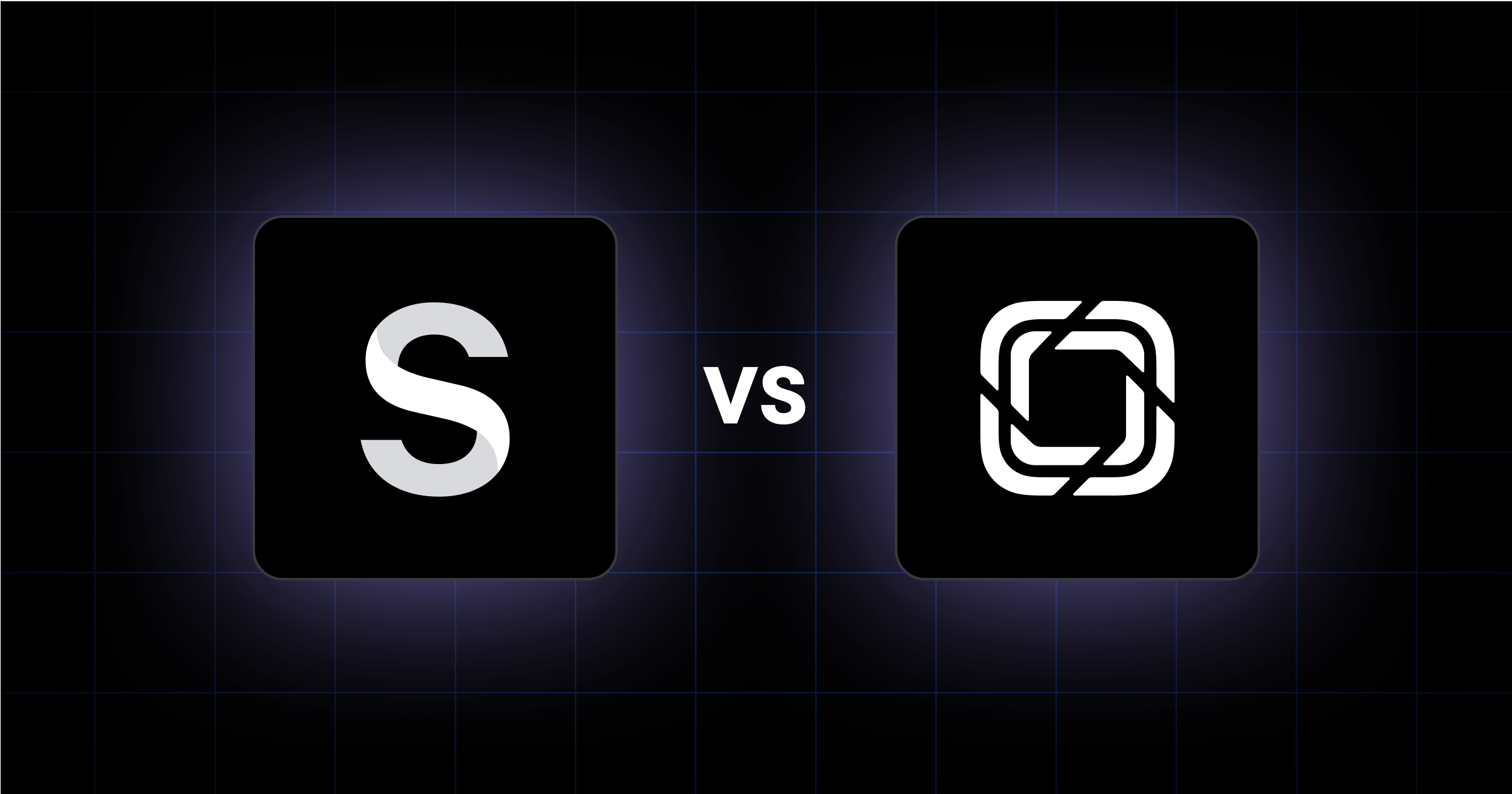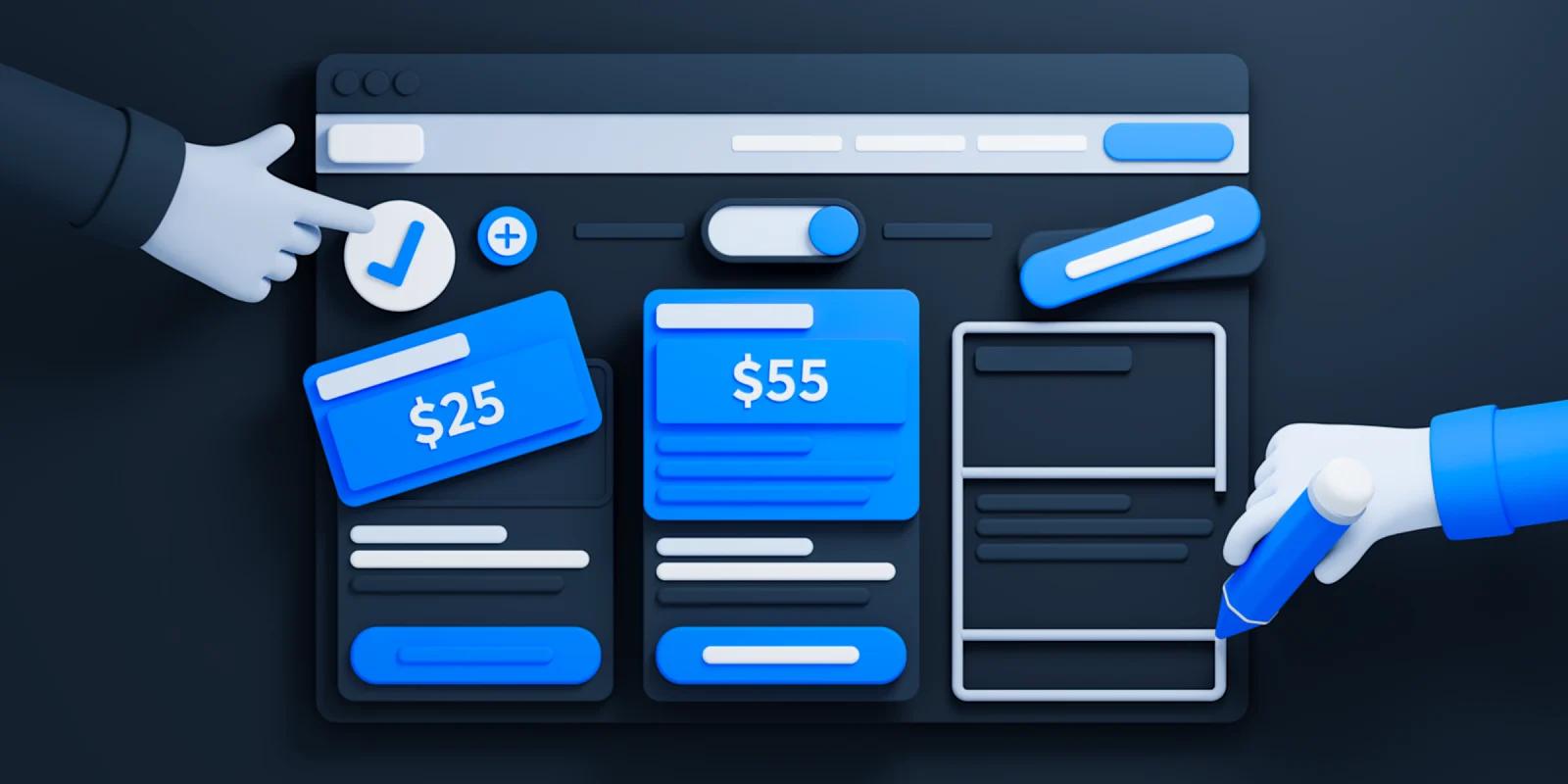Have you ever wondered how some websites seem to know exactly what you're looking for, even before you do? Homepage personalization is often the reason for this. It is a powerful strategy that can turn your website into a tailored experience for every visitor.
Understanding your audience and delivering content that speaks directly to their needs can significantly boost your conversions without relying on expensive advertising campaigns.
But what exactly is homepage personalization, and how can you implement it to drive real results for your business?
In this article, we'll explore the key elements of effective homepage personalization, uncover data-driven strategies, and inspire you with creative ideas to enhance your website's performance.
Key Takeaways
- Homepage personalization can significantly increase conversions by creating a tailored experience for each visitor.
- Effective personalization strategies involve understanding your audience, segmenting users, and delivering dynamic content and recommendations.
- Data-driven approaches, such as using customer data, A/B testing, and AI-powered personalization, are essential for maximizing the impact of your homepage.
- Personalized welcome messages, custom product recommendations, and tailored discounts and offers can help engage your visitors and drive more conversions.
What is Homepage Personalization?
Homepage personalization is the process of tailoring the content and user experience of a website's landing page to individual visitors.
It involves serving different versions of your website to users based on their unique characteristics, preferences, and behaviors. This personalization is driven by data collected about each visitor, which is then used to provide a more relevant and engaging experience.
Benefits of Personalizing Your Homepage
Implementing website personalization can help your business in numerous ways:
- Enhance the user experience by presenting content that is more aligned with each visitor's interests and needs.
- Increase engagement and encourage visitors to explore your website further.
- Boost conversion rates by presenting personalized calls-to-action and offers.
- Improve customer loyalty by demonstrating that you understand and cater to their individual preferences.
- Gain valuable insights into your audience's behavior and preferences to inform your personalization strategy and improve your overall marketing efforts.
Using website personalization can create a more personalized and engaging homepage that helps your business stand out in a crowded digital market and better connect with your target audience. This is why the global revenue of customer experience personalization and optimization software is projected to surpass $9.5 billion this year.
How Does Homepage Personalization Work?
Homepage personalization tailors the content and experience of your website's homepage to meet the specific needs and preferences of individual visitors. This involves several key steps to ensure each user receives a unique and relevant experience.
Data Collection and Analysis
The first step in homepage personalization is collecting data about your visitors, which can include:
- Demographics: Age, gender, location, and language preferences.
- Behavioral Data: Browsing history, time spent on pages, and previous interactions with the site.
- Contextual Data: Device type, time of day, and referral source.
Analyzing this data helps identify patterns and segments within your audience, aiding in the understanding of what content or products are most relevant to different user groups.
Role of Machine Learning and Algorithms
Machine learning algorithms are crucial in processing vast amounts of data to deliver personalized experiences in real-time. These algorithms can:
- Predict User Preferences: By learning from user behavior, they can anticipate what content or products a visitor might be interested in.
- Adapt Content Dynamically: Adjust the homepage layout, messages, and recommendations based on the user's interactions.
- Improve Over Time: Continuously learn from new data to refine personalization strategies.
4 Key Elements of Effective Homepage Personalization
Website personalization allows companies to create a more engaging and tailored experience for their visitors. To maximize the impact of homepage personalization, there are several key elements to consider.
1. User Segmentation and Targeting
Effective website personalization starts with understanding your audience and segmentation causes companies to be 60% more likely to understand their customers.
So, through segmenting your visitors based on factors like demographics, interests, or behavior, you can create personalized content and offers that resonate with each group.
2. Dynamic Content and Recommendations
Personalized homepage content goes beyond static information. Using dynamic content and product recommendations based on a visitor's browsing history, interests, or purchasing behavior can greatly enhance their experience.
This type of personalization creates a more engaging and tailored journey for each individual who visits your website.
3. Personalized Call-to-Actions (CTAs)
The calls-to-action on your homepage are crucial for converting visitors into customers.
Personalizing these CTAs based on a user's stage in the buyer's journey or their specific interests can increase the relevance and effectiveness of your homepage personalization initiatives. Personalized CTAs convert 42% more visitors compared to generic or vague CTAs.
4. Geolocation-Based Personalization
Incorporating geolocation data can enable you to implement CMS localization including localizing your homepage content and offers based on a visitor's location.
This can include displaying local product availability, showcasing relevant events or promotions, or tailoring the language and currency to the user's region.
Through carefully implementing these key elements of effective homepage personalization, you can create a more engaging and successful personalized website that caters to the unique needs and preferences of each visitor who visits your website.
Data-Driven Personalization Strategies
Effective website personalization requires a data-driven approach. Utilizing customer data and behavior analytics can help you to gain valuable insights to create personalized user experiences that resonate with your audience and increase CRO.
Utilizing Customer Data and Behavior Analytics
Personalization relies on understanding your customers' preferences, interests, and behaviors. Through collecting and analyzing data from your website, you can segment users and tailor the content personalization to their specific needs.
This could include tracking page views, clicks, search queries, and other engagement metrics to understand how customers interact with your website.
Implementing A/B Testing for Personalization
Content personalization is an ongoing process, and A/B testing can be a powerful tool to measure the success of your personalization efforts. Creating two or more variations of a personalized landing page or banner on the homepage allows you to compare their performance and identify the most effective personalization tactics.
Implementing A/B testing for personalization initiatives allows you to optimize performance and identify the most effective personalization tactics. Currently, 77% of organizations use A/B testing to optimize their conversion rate on corporate websites indicating its efficacy.
This data-driven approach helps you continuously refine and improve your website personalization campaigns.
AI and Machine Learning
Advances in artificial intelligence (AI) and machine learning have revolutionized the field of website personalization. Through applying these technologies, you can analyze user behavior and preferences in real-time, dynamically customizing the website experience to each individual visitor.
This type of personalization lets you create highly targeted and relevant content, recommendations, and calls-to-action that drive increased engagement and conversions.
Creative Homepage Personalization Ideas
Effective website personalization allows companies to create unique and engaging experiences for their visitors.
Incorporating personalized elements into your homepage can enhance user engagement, boost conversions, and drive business growth. Here are some creative homepage personalization ideas to consider.
Personalized Welcome Messages
Greet your visitors with a personalized welcome message that acknowledges their unique preferences or browsing history. This helps establish a connection and sets the tone for their overall experience on your website. A few examples might include:
- “Welcome back, [Customer Name]! We’ve curated some recommendations just for you.”
- “Hi [Customer Name], glad to see you again! Check out the latest updates in [category of interest].”
Custom Product Recommendations
40% of consumers wish that brands knew more about their style preferences. Utilize your customer data and behavior analytics to provide personalized product recommendations on your homepage.
This type of content personalization ensures that visitors see products and services that are most relevant to their interests.
Tailored Content Based on User Interests
Personalize the content on your homepage by dynamically displaying articles, videos, or other information that aligns with each visitor's preferences and browsing history. This type of personalization enhances the user experience and keeps them engaged with your website.
Personalized Discounts and Offers
Offer personalized discounts, coupons, or special offers to your visitors based on their past purchases, browsing behavior, or membership status.
This personalization tactic can be an effective way to drive sales and conversions as well as gather contact information because 80% of consumers will share personal data in exchange for personalized deals or offers.
Interactive and Engaging Elements
Incorporate interactive and engaging elements into your homepage, such as quizzes, surveys, or configurators, to create a more personalized and enjoyable experience for your visitors.
These types of personalization techniques can increase dwell time and user engagement on your website.
Implementing these creative homepage personalization ideas can enhance the user experience, boost conversions, and drive the success of your website personalization initiatives.
Tools and Technologies for Homepage Personalization
A successful website personalization campaign requires the right tools and technologies.
Personalization provides a powerful way to enhance the user experience and drive conversions, but it's important to have the right infrastructure in place.
Website personalization allows companies to create tailored experiences that cater to the unique needs and preferences of each visitor.
Personalization Platforms and Software
Personalization platforms and software offer a comprehensive solution for website personalization. These tools enable businesses to segment their audience, create dynamic content and recommendations, and deliver personalized call-to-actions (CTAs) and offers.
With features like omnichannel personalization, personalization use cases can be expanded across multiple touchpoints, providing a cohesive and personalized experience.
Integrating CRM and Marketing Automation Tools
Integrating customer relationship management (CRM) and marketing automation tools can significantly enhance personalization efforts as well as increasing sales by up to 29%.
Using customer data and behavior analytics helps businesses to create a personalized homepage, deliver content personalization, and craft effective website personalization campaigns.
These integrations allow for a more holistic understanding of the customer, enabling personalization tactics that resonate better with each individual visitor.
Analytics and Tracking Tools
Measuring the impact of homepage personalization is crucial for refining and optimizing your strategies. Analytics and tracking tools provide valuable insights into user engagement, conversion rates, and the overall effectiveness of your personalization initiatives.
Through analyzing this data, businesses can make data-driven decisions to further enhance the personalized experience and drive greater success for their website.
Implementing the right tools and technologies is essential for creating a personalized homepage that engages visitors and drives conversions. Using personalization platforms, integrating CRM and marketing automation, and utilizing analytics can ensure their website personalization means creating a truly tailored and impactful user experience.
Measuring the Impact of Homepage Personalization
Personalized homepage experiences can significantly boost website performance, but how do you measure the impact of your personalization initiatives?
To assess the effectiveness of your website personalization efforts, you'll need to monitor a few key metrics.
Key Metrics to Monitor
- Conversion rate: Track how personalization affects the percentage of visitors who complete a desired action, such as making a purchase or signing up for a newsletter. For comparison, the average conversion rate of the B2B industry is 2.1%.
- Bounce rate: Monitor how personalization impacts the percentage of visitors who leave your site after viewing only one page.
- Time on page: Analyze how personalization influences the average time users spend on your homepage and other key pages.
- Click-through rate: Measure how personalization affects the percentage of visitors who click on your homepage's call-to-action buttons and links.
- Return on investment (ROI): Calculate the revenue and profits generated by your personalization efforts to determine the overall business impact.
Analyzing User Engagement and Conversion Rates
Personalization techniques like user segmentation, dynamic content, and geolocation-based personalization can have a significant impact on user engagement and conversion rates.
Through closely monitoring these metrics, you can identify which personalization strategies are most effective in driving the desired actions from your homepage visitors.
Adjusting Strategies Based on Performance Data
Continuous testing and optimization are key to successful website personalization campaigns. Use A/B testing and multivariate testing to experiment with different personalization tactics and identify the most impactful approaches.
Additionally, integrating AI and machine learning can enhance your personalization efforts by dynamically adapting the homepage experience based on real-time user data and behavior.
Case Studies of Effective Homepage Personalization
Personalizing the homepage can significantly enhance user engagement and drive conversions. Let's explore how leading companies have successfully implemented personalization on their homepages.
Amazon's Personalized Product Recommendations
Amazon excels at homepage personalization by showcasing products tailored to each user's interests. When users log in, they see recommendations based on their browsing history, past purchases, and items they've shown interest in. This approach keeps users engaged and encourages them to explore more products.
Netflix's Customized Content Suggestions
Netflix personalizes its homepage by offering content aligned with the viewer's watching habits. By analyzing viewing history and ratings, Netflix suggests movies and shows that users are likely to enjoy, helping them discover new content quickly.
Spotify's Tailored Music Playlists
Spotify enhances user experience by curating personalized playlists like "Discover Weekly" and "Daily Mix." These playlists are generated based on the user's listening history, introducing them to new artists and songs that match their preferences.
Lessons Learned and Best Practices
- Leverage User Data Thoughtfully: Utilize browsing and purchase history to offer relevant recommendations without being intrusive.
- Enhance User Experience: Personalization should simplify the user journey, making it easier for users to find what they need.
- Maintain Privacy and Trust: Be transparent about data usage and give users control over their personalization settings.
- Continuously Update Recommendations: Regularly refresh personalized content to keep it relevant and engaging for returning users.
Conclusion: Enhancing Your Homepage with Personalization
Personalization provides a powerful way to connect with your audience and deliver tailored experiences that drive engagement and conversions. Implementing effective personalization techniques can allow your business to make the most of the opportunity on your homepage and create a personalized journey for every visitor.
As web design experts at Webstacks, we understand the importance of staying ahead in the changing landscape of homepage personalization. Book a call with us today!




